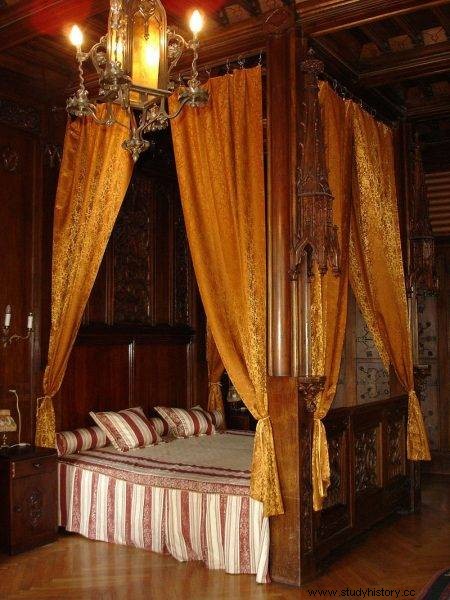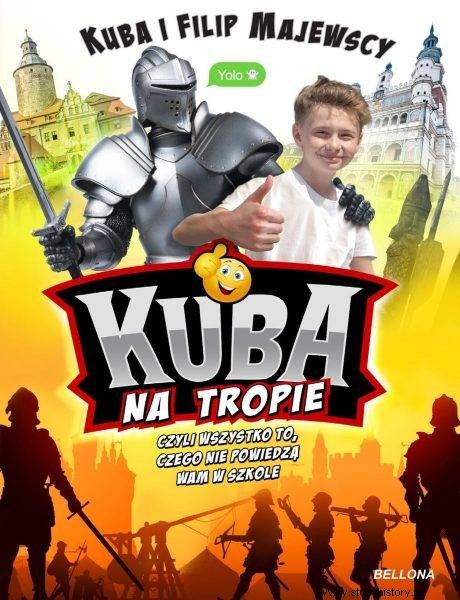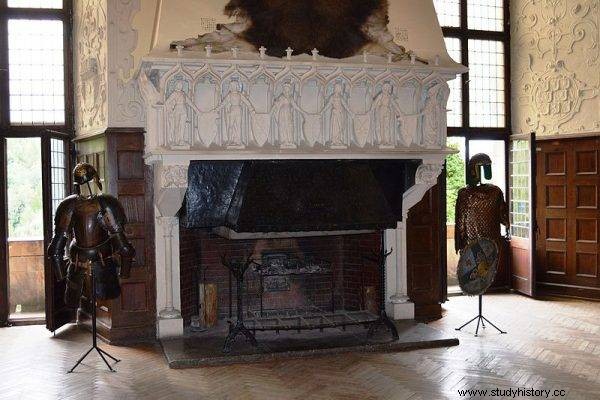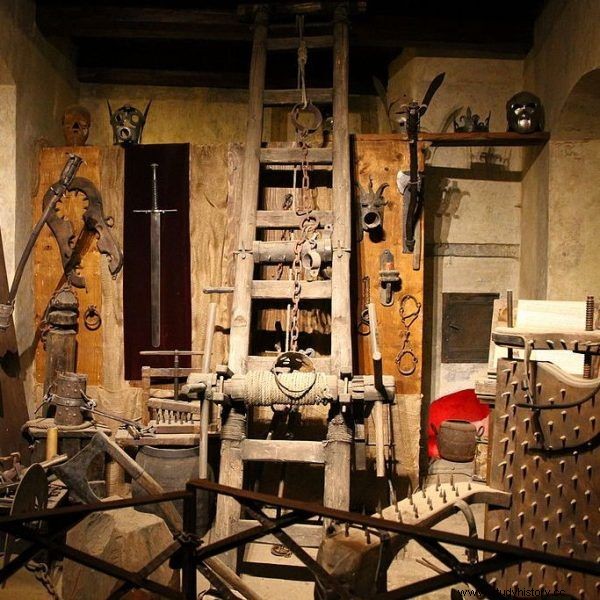Rushing drafts, torture chambers and ... ghosts. Life in medieval strongholds was shadowed by cruelty. It was no different at the Czocha Castle. This monumental castle still hides many secrets within its walls. Today's explorers have an extremely difficult task, because facts are mixed with legends ...
In the 16th century, the castle was ruled by Johann, who had the beautiful Ulrich as his wife. The woman had long, wavy blonde hair and blue eyes. They both loved each other very much.
The fruit of betrayal
Once upon a time, Johann, who was an MP, was sent by the king on a mission. He left for overseas countries and returned to his wife two years later. On the bridge in front of the castle, servants greeted him with the news that Ulryka had cheated on him with the German nobleman Joachim von Nostitz .
Johann did not believe it at first, as he knew that his wife loved him very much. He went into the bedroom and saw a tiny baby on the bed next to her. It was too small to be his father. He already knew he was looking at the fruit of betrayal.

In those days, the punishment for unfaithful wives was death by drowning in a well.
He went down to the Marble Hall and sat by the fireplace all night, pondering what to do. In those days, the punishment for unfaithful wives was death by drowning in a well. He knew this castle custom, however, he did not stop loving his wife and did not want to kill her. But in the morning it was time to make a decision.
He ordered Ulryka to be drowned in a well in the castle courtyard and the child to be walled up alive in the fireplace in the Marble Room. On dark and cloudless nights you can hear his soft crying coming from behind the fireplace. Then the ghost of Ulrica leaves the well and rushes to the castle to cuddle her child.
How do I get rid of my wife royally?
I am shocked at how easily and with impunity it was once possible to take others' lives, and how cruel and clever ways it was done! Meanwhile, we are looking at an antique bathroom and a gigantic mirrored wardrobe, which can be viewed from all sides. Finally, we come to the representative chamber of the lord at the castle, a certain Gütschof.
- See that big bed? It is said to have installed a special trapdoor that activated a complicated and clever mechanism. The lord of the castle always slept on the left and laid his wife on the right. If the woman was disobedient, boring or grumpy, he would pull a lever, half the bed would rise and turn ninety degrees, and the unfortunate one fell straight into the dungeons.
- I don't feel like believing. Here is the entrance. Here is the entrance .

The text is an excerpt from the book by Filip and Kuba Majewski "Kuba na tropie", which has just been published by Bellona. Buy now
- You don't have to. It is said that such a fate befell a beautiful but greedy Anna. The young sprite fell in love with the old and hideous but rich lord of the castle. Delighted with her beauty, he married her. The young wife boasted to everyone in the area. He did not foresee just one Filip lowers his voice. - The girl just after the wedding decided that she is already rich and does not have to seek the favor of her husband. She was disrespectful to him and hinted that she was disgusted with him.
- I understand she didn't have to wait long for her revenge.
- Of course. One night, as soon as she fell asleep, her husband activated the trapdoor and got rid of Anna, who had fallen into the dungeons washed by the waters of the Kwisa River. Her spirit also wanders around the castle at night.
- Maybe we better not stay here?
Life in a medieval castle
I'm kind of smiling, but I'm starting to feel uncomfortable. You have to admit that it's no fun to sleep in a place where so many people were murdered . The bed that Filip was talking about is huge and you enter it not from the side, but from the foot, and also through a wooden door. They are not particularly tall and are more like a garden gate, but that's a bit weird.
Filip says it's because it was bitterly cold in the castles, even in summer. And someone ingenious figured out what to do to stay warm. Heavy, thick curtains were hung around the bed, and some kind of door was mounted to make it easier to move them away. Heated bricks were put under the down duvets and thanks to that you slept in the warmth. Indeed, when I think about it, I come to the conclusion that heating such enormous stone chambers must have been quite a challenge. And those big windows that let the wind blow in and blow.

It must have been quite a challenge to heat such huge stone chambers.
We go down to the Knight's Hall with a gigantic fireplace and organs similar to those found in churches. Then we go to the armory and, to our surprise, the rooms are full of radio stations and stuff from the Second World War. It turns out that in the years 1939–1945 German troops were stationed here. Most likely, radio soldiers were trained in the castle area to watch over the communication between the various troops. A lot of souvenirs remained after them.
Visit to the torture chamber
Finally, we go outside to reach the most interesting place - the torture chamber. No, this is not the executioner's house, but his workplace, the torture chamber.
I stumble on the protruding stones, and if it weren't for Philip, I would have fallen to the ground like a long one. As you can imagine, it would be a bit of a pain compared to that caused by the executioner during interrogation and torture. The dungeons are gloomy, and although I know nothing bad will happen to me in them, it still doesn't get very nice. But curiosity prevails, and I let Philip drag me under a nailed-down chair.

The torture chamber is not the executioner's house, but the place where he works, i.e. the torture chamber (in the photo:torture devices in the Prague castle).
- I'm spinning you! I thought my chair at school was uncomfortable but it looks terrible. They should put them at the teacher's desk, maybe thanks to that they would shorten the lessons and not make them boring.
- But as torture, they would forever interrogate you and harass you with quizzes.
I'm afraid Philip may be right. What like what, but ingenuity cannot be denied to our teachers. I don't know where they get all these test questions from. They look for some irrelevant information that is in the fine print in the margin of the manual, and expect us to know it. They ask meaningless questions about the ingredient of something or the year when it was created.
As you can imagine, I, like most of the class, don't even notice this print. When I look at the textbook (which I don't do that often, unless my mother reads in the electronic journal that class work is approaching and makes it a point of honor to question me), I focus on the pictures. Some are really fantastic, especially in history books, and there are a lot more interesting things to be seen in them than what is described in the margins.
Source:
The text is an excerpt from the book by Filip and Kuba Majewski "Kuba na tropie", which has just been released by the Bellona publishing house.
